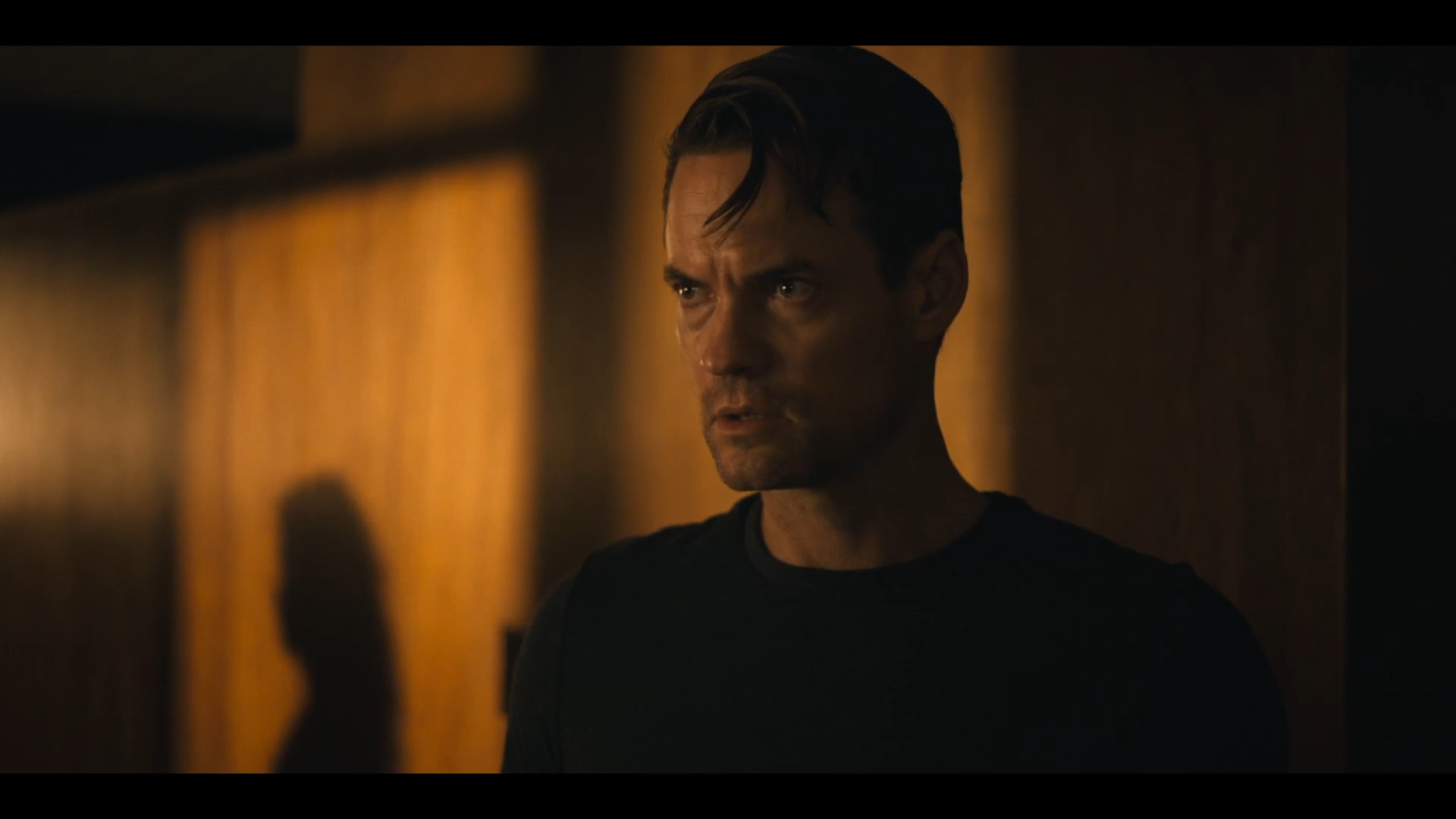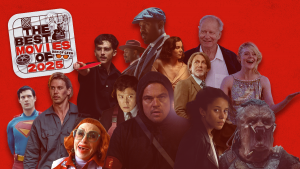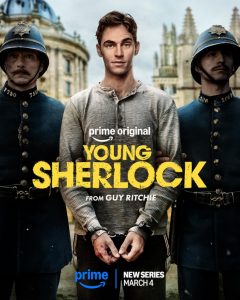
There is a sterile, detached feeling that runs throughout Mid-Century (2022). The direction, set design, costuming, and dialogue create a stiff, off-balance tone that initially works in this horror/thriller/mystery. At one point, lovers Tom (Shane West) and Alice (Chelsea Gilligan) embrace in front of a beautiful, mid-20th century home they have rented for a weekend stay. Everything about the shot looks staged, from the way the two interact to how the house looks. The background seems superimposed on a green screen, creating an unusual effect. Nothing about the moment looks authentic, which lends to an underlying dread. Something about this getaway does not appear right – it’s as though the two were walking right into an unforeseen trap.
This impending doom is further exemplified once they step through the front door. We’re told that the house was built in the 1950s, reflecting the post-war Americana that you would see in a magazine. Right away, we realize something is amiss. The straight angles, stylized furniture, and floor to ceiling windows does not exude warmth or comfort, but unease and vulnerability. To make matters more disturbing, the house is decorated with numerous horrific paintings of ghoulish faces, or books detailing occult rituals. This isn’t exactly the kind of stuff one would want to put in their property if they were trying to get it rented – just imagine the kind of reviews it would generate!

Mike Stern’s screenplay and Sonja O’Hara’s direction juggles several concepts, perhaps too many. The house itself acts as a metaphor, designed to reflect American optimism when in fact it’s a disguise for systemic misogyny. We see this through the character of Fredrick Banner (Stephen Lang), who was the architect who built and lived in the house. Through hazy flashbacks, we learn that Frederick controlled his home with an iron fist, subjugating those around him – including his wife Marie (Sarah Hay) – to a barbaric form of domesticity. The point (I think) is that this sentiment has bled all the way through to the present time. It’s revealed that Tom and Alice are going through a difficult patch of their relationship. Where he wants to settle down and have kids, she wants to continue her career as a doctor.
The narrative also operates as a classic haunted house story, which is where things fall apart. Spooky images and ghostly apparitions start to pop up around each corner, with our protagonists – especially Tom – searching around in classic horror movie fashion. We get familiar cinematic tricks, such as a shadowy figure walking past the camera right when characters have their backs turned. It’s here where the film really stretches the limits of believability. One of the biggest pitfalls when it comes to ghost stories is that they can be constructed to do just about anything. If there is no limit to what a spirit can do, then it removes any kind of dramatic tension. Can they communicate with the living? Are they invisible? Can they teleport from one time to another? Can they possess a body? The depiction of the supernatural in this scenario is flimsy at best. It also doesn’t help that the special effects – whether due to budget constraints or not – are not very convincing. The waxy CGI is pushed to the forefront so that we can’t help but notice how unreal they look.
Things get progressively abstract in the latter stages. The editing jumps between time, location, and perspective. Characters will appear on screen in one frame, and then disappear into thin air in the next. There is a dreamlike, hallucinatory quality to all of this, but the approach is so fractured that all sense of rhythm and narrative flow is gone. The result is jarring and disjointed – it’s all a jumble of images loosely stitched together. There’s nothing wrong with a production taking on a fantastical approach with its material, but in this case the structure is so fragmented that it takes away from the thematic elements. The rug gets pulled from underneath us. Instead of getting wrapped up in the story and characters, we lose our bearings as things shift into a bizarre second half.

All the while, I kept thinking how much of a missed opportunity we had with Stephen Lang. As his work in films like Avatar (2009) and the first Don’t Breathe (2016) have proven, Lang is an actor of considerable screen presence. His physical stature can exude authority and menace in equal measure. As Banner, Lang is clearly having the most fun as the strange, dangerous architect. Where everyone else is playing their roles straight down the middle, he paints Banner with several different shades and variations – all to strong effect. He can strike fear without having to raise his voice. The fact that his character is resigned to flashback scenes is unfortunate. Every time he shows up, the energy in the room noticeably escalates.
Mid-Century has a lot of ideas but has trouble keeping all the plates spinning. As social commentary, ghost story, or mystery, it’s underdeveloped. It offers a certain kind of experience but doesn’t live up to that promise. The stilted, awkward first act created a dark, moody atmosphere, but all that potential dissipates once we enter the flights of fancy. In the end, I walked away not feeling excited, scared, entertained, or provoked. In fact, I felt nothing at all.







